Adobe Helps Customers Ditch Paper Waste


Sustainability is a buzzword. I would argue that it is an important buzzword, but what does it really mean? There are various definitions for the word. To simplify: Sustainability means meeting present needs without messing up the environment so future generations aren’t left with the mess to clean up.
So, how does a business help customers be more sustainable? One business that's answering this question is Adobe, which helps its customers ditch paperwork. And paperwork is still being generated in this digital age. In the U.S., 30 billion documents are printed annually, Kevin Lynch, vice president of document services for Adobe, told TriplePundit. Here are a few more staggering facts:
- The average U.S. office worker generates about two pounds of paper and paperboard products daily.
- About 90 percent of all office waste is paper.
- Approximately 500 paper documents are signed by the average authorized employee annually.
Much of the paper waste generated in U.S. offices can be eliminated. A document created, signed, shared and stored in Adobe Document Cloud has 91 percent less of an environmental footprint than it would if it were printed, and it has a cost savings of over 90 percent. The good news is that more people are shifting to digital documents. Or, as Lynch said, “We process over 50 billion documents every year, so already more are electronic in nature.”
Sometimes all it takes is for a customer to see the impact of his or her choices -- in this case: how much water, waste and wood they will save by not printing. GreenMeter for Document Cloud allows customers to enter in the amount of paper they would normally print and see how much water, waste and wood they'd save by not printing. For example, a business that reduced printing by 10,000 documents would save 11,427 gallons of water, 961 pounds of waste and 3,725 pounds of wood.
"It's staggering the amount of resources it takes to print something,” Vince Digneo, global sustainability strategist for Adobe, told us. “The point of this whole product is that you don't have to print. You could create a document digitally. You can share it directly in Document Cloud. You can save it. You can edit it. You can sign it. And you never have to have a physical piece."
The more companies that go green, the larger the impact
There are several examples of how using Adobe’s products helps businesses be more sustainable while saving money and time. Take KLM Airlines, a subsidiary of the Air France-KLM Group and the Netherlands’ flagship airline. In one year, KLM saved 1 million sheets of paper, which translates into 120 trees and 10 million liters of water.
Here are a few more examples:
- Using eSign services helps Pepperdine University in Malibu, California, save time: The college reduced turnaround times with eSign from days or hours to an average of just 19 minutes.
- Kuhn Krause, a leading provider of farm equipment, has also found value in using e-signatures. The company calculated a five-fold reduction in the cost of paper printing.
Adobe strives to promote sustainability from within. Its internal campaign to reduce business travel, called “Skip a Trip,” encouraged employees to take a voluntary pledge to skip one business trip in 2014 and use the Web conferencing tool Connect instead. Through the campaign, employees saved 331 metric tons of carbon emissions in just eight months. They also avoided 711,000 miles of air travel, which is equal to traveling around the world 29 times, and a savings of over 37,000 gallons of gasoline.
There is a multiplying effect when a number of companies decide to print less paper. "One company can make a big difference, but you can imagine in aggregate. It makes a big, big difference,” Lynch said.
His message for companies is simple: “If you are still printing out, signing documents and faxing back papers, that is not very efficient. That needs to change.” Moving to a product like Document Cloud allows you to create and share a document digitally will help accelerate your business. And it is also good for the environment.
What can your business do to help customers become more sustainable? Tell us about it on Twitter at @TriplePundit.
Image credit: Flickr/David Morris
Crowdsourcing Global Climate Action: POC21


Climate negotiations are boring, involve mostly bureaucrats, and often ignore or forget about important, on-the-ground issues. Organizers of the POC21 innovation camp aim to change that by prototyping open-source change and involving the greater community ahead of the Paris Climate Talks.
Check your calendar – it is now less than six months until the historic Paris COP21 Climate Talks. With the G7 just announced a pact to reduce carbon emissions, more countries around the world taking steps to move away from fossil fuels, and companies like Ikea making big investments to reduce their carbon footprint, the momentum is, for the first time in years, on the side of sustainability.
The question now is: What will this change look like? As heat waves bake India and drought ravages California, it is clear that we are moving closer and closer to the worst-case scenario of catastrophic climate change. Mere action is not enough; we need drastic, innovative change. Yes, we need a a long, legalistic, global climate agreement, but also much, much more.
Enter POC21, a proof of concept for open-sourcing sustainability.
“From [August 15 to Sept. 20] the global best of open source, +100 makers, hackers and designers will join forces at the stunning Chateau de Millemont near Paris to bring to life what we call the smallest functional and replicable cell of a sustainable society, right in front of the castle. Five weeks of co-living and co-making to show to the world that true sustainability beyond the bothersome buzzwording is feasible, looks and works awesome and is huge fun too.”
The idea is that bringing these people together will create a catalyst for ideas and projects that can be scaled up to quickly build a sustainable society. By showing climate negotiators that sustainability is not only achievable, but desirable, POC21 hopes to spur real action at COP21 happening just down the road.
The key here is open source. Much like Elon Musk at Tesla, when he open-sourced his company's technology in order to spur electric car adoption globally, the fact that POC21 will create solutions that people all over the world can utilize, adapt and build upon for their own communities.
Moreover, the project aims to work directly with governments to implement the solutions they come up with.
“After the pilot camp we plan to assemble a top-notch international advisory board that will carry the results to decision-makers in the economy and politics. Our research partners will provide the scientific framework to the practical camp results.”
This just the type of innovative, cross-sectoral and cross-boundary thinking we need. If you are planning to go to Paris this winter, be sure to check out POC21 – or, if you have an idea, join and help build open-source solution for our future.
Image Source: Wikimedia Commons
How Sustainable is 3-D Printing?


By Anuradha Wadhwani
From fresh cupcakes to satellites that are created in space, 3-D printing is poised to make on-the-spot manufacturing a reality. Enterprises have enthusiastically praised the environmental benefits of moving toward that state where most goods will be produced and sold close to their point of consumption. Equally, consumers are excited about switching over to a greener, more ‘local’ way of life enabled by the additive manufacturing process.
“It’ll put an end to polluting factories.” “It’s going to help save fuel.” “It’s the new green credential for businesses.” These are just some of the statements that accompany most discussions about 3-D printing. But, in the opinion of researchers, we may have been too quick and a tad idealistic in reaching these conclusions.
Although 3-D printing brings with it the promise to make manufacturing ‘cleaner and greener,’ the enabling technologies don’t boast those qualities yet. Even as we extol 3-D printing, all of its advantages need to be taken with a grain of salt – at least until the time we see more sustainable solutions to bypass the following problems:
Harmful emissions call for standardized filtration and exhaust accessories
The environmental impact of additive manufacturing could be as bad as conventional manufacturing, but there isn’t an appreciable body of definitive research to tell us that yet. The few studies that delved deeper, however, haven’t emerged with good news.Sustainable design strategist Jeremy Faludi recently published a study on "ultrafine particle (UFP) emissions from desktop 3-D printers" and concluded that caution should be exercised when operating 3-D printers in indoor environments that are not properly vented. Many such printers extrude and deposit heated thermoplastics, releasing harmful UFPs and emissions in the process. Another study, conducted by researchers at the Illinois Institute of Technology in the United States and the National Institute of Applied Sciences in France, had similar findings to report.
There are currently no clear mandates about the filtration or exhaust accessories that should be sold with such printers, which means users are likely already exposed to serious health hazards. Because 3-D printers share this undesirable attribute with traditional manufacturing, it’s important that they’re brought under the regulatory scanner, too.
Toxic materials mean that we need to stress on the use of eco-friendly alternatives
A study at the Robert Morris University in Pennsylvania found that materials such as photopolymers — which are used as epoxy resins for rapid prototyping using resin 3-D printing—contain up to 100 times more antimony (a toxic heavy metal) than, say, polyethylene terephthalate (PETE). Sample products made using these photopolymers were observed for a 20-hour period; researchers noted that 3 percent of the antimony content leached from the samples during this time.Although the quantity of photopolymers used in prototyping is insignificant, the 3-D printing industry’s breakneck pace of growth is expected to compound the negatives. As more such problems come to the fore, the demand for eco-friendly materials will certainly develop. Another point that needs some pondering over is the best practice(s) for end-of-life disposal of 3-D printers.
Plastics are detrimental to the environment. Period.
We’re not too far from the day when most homes will have a 3-D printer. Of course, there’s nothing that beats the convenience of printing a toy for your kid or a garden hose for grandpa, but imagine the unbridled reliance on plastics this will induce. The problem, as such, is not with adopting this distributed manufacturing practice. It’s about the kind of materials we'll grow reliant on in the process. Plastics can be recycled, yes. In fact, there are products such as the Filabot Reclaimer that allow bad 3-D prints to be reused. And more such products are now becoming available on the market.But a real solution to this problem can only be brought forth by experimenting with alternative materials. Interestingly, there are a number of exciting developments being reported on this front. Take for instance, the team at the Pennsylvania State University that’s making a 3-D printable thermoplastic derived from squid DNA. Or, the France-based leFabShop that launched an innovative Seaweed Filament (SWF) for 3-D printing.
Of course, these environmental concerns will in no way impede the frantic pace at which the 3-D printing industry continues to grow. But enterprises and consumers will likely thank themselves a few decades from now for putting some thought into making the 3-D printing phenomenon greener when they had the chance.
Image credit: Pixabay
Having extensively worked as a journalist with leading national dailies in India, Anuradha Wadhwani now writes for Transparency Market Research, a U.S.-based market intelligence firm. Anuradha is passionate about tracking (and questioning!) market trends across areas such as sustainability, innovative materials and chemicals.
Spiders Are Making Your New Silk Clothes


“Happy birthday! I got you a shirt made out of spider butt silk.” You might hear these words next year.
Butts can be sexy, funny and comfy to sit on. But they have never manufactured anything useful to humans. Until now.
A startup, Bolt Threads, is turning a silky supermaterial from spider butt ducts into sports bras, athletic shirts, and potentially artificial tendons, plastic bottles, iPad covers and suspension bridge ropes. Seriously.
The silky material is five times stronger than steel, tougher than bulletproof Kevlar and softer than wool. It can stretch up to 40 percent its normal length and can be waterproof. It’s also more eco-friendly than land-demanding, water-guzzling cotton or petroleum-based polyester.
Want to take your iPad kayaking? It’s cool, just put it inside your waterproof spider butt silk case. Walking through a shady part of town? Wear your bulletproof spider butt silk jacket.
Inquisitive textile designers have tried to create material from spider silk for decades. Contrary to popular belief, the ancient Chinese Silk Road trade route was not an international highway for spiders. However, several years ago, 70 people spent four years collecting over a million wild spiders and 80 feet of spider silk. All this work only produced an 11-by-4 foot textile. That’s a little larger than a yoga mat … the most expensive yoga mat in history, which is now on the wall of a natural history museum.
The hurdle has been scaling production. The inventors of the Bolt Threads silk originally purchased a swarm of spiders and let the spiders spin webs all over the office. There’s no word as to whether they also purchased flies to release into the office to feed the spiders. According to Bloomberg Business, “One day a well-known [University of California, San Francisco] molecular biologist walked in, saw a spider hanging in a doorway, and ran away screaming.” The biologist’s whereabouts remain unknown, but people suspect Antarctica where it’s too cold for spiders to live.
Not only is it hard to handle the quantity of spiders required, spiders are territorial and cannibalistic and turn spider farms into war zones. If spiders could go to counseling, do some team building exercises like trust falls and work together, they could be brilliant entrepreneurs.
Due to these complications, the scientists ditched the idea of spiders producing the silk. Instead, they studied the way spiders produce silk then mimicked the process. The scientists bioengineered yeast cells that grow during fermentation – similar to the way beer is made. The yeast cells produce protein. The liquid protein gets squeezed through holes that mimic the spider’s spinneret and drop into a bath of water, salt and sugar. This solidifies the protein into strings of fiber.
Afterwards, the strings are laid out to dry then shipped off to be spun into fabric. Using this method they can produce spider silk without the spiders. The production is now measured in metric tons instead of ounces.
The yeast cells can be genetically modified to produce different types of silk and create a variety of levels of softness, durability and strength. Want a softer fabric? All you do is change the protein sequence.
According to investor Steve Vassallo with Foundation Capital, “Bolt Threads is uniquely positioned to commercialize technology that people have dreamt about for decades.”
Bolt Threads is exploring two business options: 1) manufacture their own clothes, or 2) sell the technology to a clothing brand. Another revenue model to consider would be bringing back the thousands of spiders and renting out their building during Halloween.
The company plans to expand production by partnering with manufacturers such as the Michigan Biotechnology Institute which will produce synthetic silk in their 4,000-liter tank.
The next time you go to stomp on a spider, think twice. Remember, it’s the reason you’re wearing an eco-friendly athletic shirt. Instead, pick it up and give it a kiss, or at least toss it a dead fly.
Flickr photo credits: 1) Yogendra Joshi, 2) Uditha Wickramanay, 3) Apryl Wiese, 4) Siamesepuppy
Circular Economics: Thinking Outside the Box
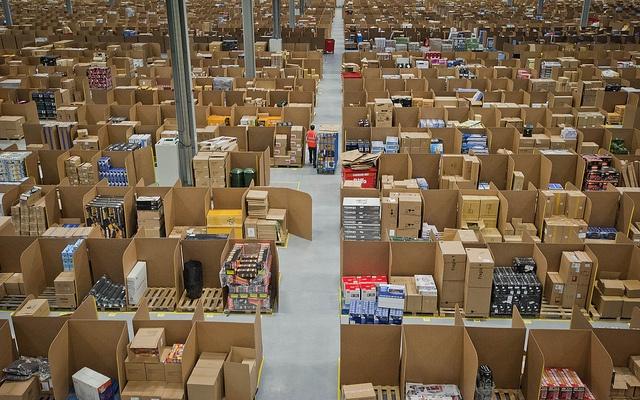

By Alex Marchyshyn and Aman Singh
Recycling.
Upcycling.
Net zero.
Shared.
Circular.
These might not yet make for pretty Google search terms, but as social, economic and environmental drivers – migration, poverty, health epidemics, pollution levels, water scarcity, etc. – push organizations to rethink their business models and strategies, these alternatives are starting to gain attention across corporations.
So much so that entire conferences have been devoted to unpack these concepts and their applications. One such concept is a circular economy, the idea of a restorative industrial economy in which all products and services can be disassembled, reinvented and put back into the system – a circular loop that benefits both consumers and businesses. By contrast, our current economic model is linear and relies on a steady stream of new resources to feed production and consumption.
Last month, we attended a forum hosted by the U.S. Chamber of Commerce Foundation in Washington, D.C. featuring representatives from both the public and private sectors. The event focused on how organizations are starting to bring the concept of a circular economy to life through product design, R&D and partnerships. Hosted in collaboration with the Ellen MacArthur Foundation, the event featured inspiring keynotes from Dame Ellen as well as William McDonough, who sparked the movement to bring cradle-to-cradle innovation to life with his seminal book "Cradle to Cradle: Remaking the Way We Make Things."
So, how can an organization bring this to life?
Having attended two days of stimulating panel discussions and rigorous workshops, here are three ways to help get you started on retrofitting the elements of a circular economy:
1. Assess the product lifecycle
Engage cross-functional stakeholders to assess your product lifecycle early on so that you have the right champions and ambassadors to push this forward. Know that this exercise is as much about understanding biomimicry principles as marketing, communications, sourcing and merchandising. Once the results are in, a cross-functional team can help your team think through the possible wins from myriad angles, including revenue streams, cost savings, marketing opportunities, partnerships, etc.
2. Engage in cross-industry collaboration
Many companies have made remarkable strides reducing waste by partnering with other industries where their products can be repurposed. For example, Procter & Gamble takes products that are slightly off spec and adjusts and reformulates them to work in other industries. From selling laundry detergent to car washes to altering beauty products to work in leather conditioner, P&G has created a revenue stream off of something that was once considered waste. This innovative way to tackle waste not only helped the company save costs, but it also fostered cross-industry collaboration that will help all industries stretch their resources with minimal effort.
3. Reframe the issue
The idea of a circular economy, like many borne out of the sustainability wing, is often dismissed and relegated to the discard pile. It’s not just the jargon, which does play a significant role in undermining its potential, but it’s also the absolute necessity to delineate it from a “good thing to do” mindset.
By reframing the move to a circular economy as a business imperative, companies can build a clearer picture of costs, opportunities and scale. This then helps secure buy-in from senior executives and helps companies better manage supply chain and procurement gaps. As DSM* North America President Hugh Welsh succinctly put it, “The case for the circular economy is not just a case for corporate social responsibility or saving the environment; it’s really about … surviving as a company … It’s a case of competitive advantage.”
--
While we’ve certainly written these as recommendations, numerous companies are already making considerable headway in embedding circular design models – and thinking – into their organizations. You don’t need to spin the wheel – start here: Guardian Sustainable Business’ Circular Economy hub or TriplePundit's series on the circular economy and green electronics, and stay in touch @EdelmanPurpose.
*Edelman client
Image credit: Flickr/Scottish Government
Aman Singh is Vice President of Business + Social Purpose at Edelman.
Alex Marchyshyn is an account executive in the Business + Social Purpose Practice at Edelman.
5 Truths About Credible Labels
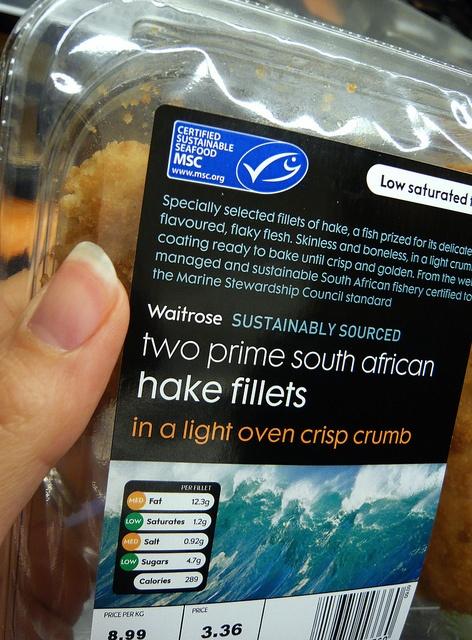

By Lara Koritzke
Most busy professionals like me recognize the mad dash during your lunch break to pick up a few much-needed items and wolf down a sandwich. Today my mission focused on a light bulb, bed sheets and dish liquid. The light bulb had the U.S. government’s Energy Star mark, a label based on independent testing and certification.
The bed sheets were a bit more confusing for the conscious consumer. They professed to be ‘100 percent natural,’ but the ‘made in India’ tag and the fact that they were cotton had me wondering about child labor, water and chemicals. Because the vague ‘natural’ text was immediately followed by ‘soft and silky,’ I began to realize this sustainability claim was more a product of clever marketing than credible practice.
So, on to my dish liquid: This one I am embarrassed to say I purchased because it was the brand my mother used when I was a child. Yes, consumer researchers, you know me well. The bottle showed a fuzzy baby animal and had a statement about ‘helping save wildlife.’ Upon a bit more investigation once I got home, I learned that the claim was a cause marketing campaign – the company was giving a portion of its profits to charity. Okay, cool. I love most forms of corporate philanthropy. But this was confusing when I dug a bit further and learned that the product had been criticized in the media for its EU-banned chemicals known to be dangerous to aquatic life. I began to think the dish liquid’s claims were trying to distract me from more important issues.
So, are these bad companies with the confusing labels? It’s probably true that many not-so-credible labels and claims are not deliberately created to be confusing or misleading. Okay, some definitely are. Some see greenwashing as low risk and high reward. But most companies are just eager to differentiate their products, and sometimes they forget about what really makes a credible sustainability claim.
This month, a new tool called Challenge the Label was unveiled for company buyers. With the tool, corporate responsibility, marketing or procurement professionals can access a list of questions for their suppliers and partners, and assess B2B and B2C claims for their credibility. They can also explore whether those claims and labels meet five universal truths. The truths were defined by ISEAL Alliance over a period of almost two years from conversations with experts, as well as research into the regulatory and guidance documents from the claims and labeling space. They are:
- Claims should be clear: The sustainability claim should be easily understood and free from misleading details. This means that you know what type of claim it is (philanthropy, membership, reporting, certification, etc.); what it refers to (the product, the company, the packaging, the CEO, etc.); and how it’s verified (self-assessed, third party, second party or not verified at all).
- They should be accurate: The claim must be truthful and based on substantiated evidence. For example, some certification programs, such as the Marine Stewardship Council, publish lists of those certified so you can check the validity of a claim.
- They should be relevant: The claim should be about an issue that is material or significant to the product or business and not a distraction from bigger and more important issues. My mother’s dish liquid here runs the risk of that. If I’m procuring carpets from South Asia, I’d want to see something about them not being produced with child labor. If I’m stocking refrigerators for my retail shop, I want to procure models that claim high energy efficiency. You get the idea.
- They should be transparent: Information about the system behind the sustainability claim must be freely available and easily accessible. You shouldn’t have to search all over the place to find more information. Usually a clear Web address does the trick.
- They should be robust. The system behind the sustainability claim must have rigorous controls and practices. You need to ask if there are any controls in place before the claim can be used. You may wish to use your own internal protocols, or consult with a trusted NGO, government partner, standards body or environmental expert to assess the system behind the claim.
By exploring the five truths of a credible claim and giving more effort to reducing misleading claims, companies can lower their risks of greenwashing, whether intended or not.
Image credit: Flicker/foodethicscouncil
Lara Koritzke is Director of Development & Communications at the ISEAL Alliance. Prior to joining ISEAL in 2011, she spent 11 years with Rainforest Alliance, where she developed global strategy for partnerships. She is based in Toronto.
California’s Unexpected Water Conservation Leaders: Commercial Property Owners
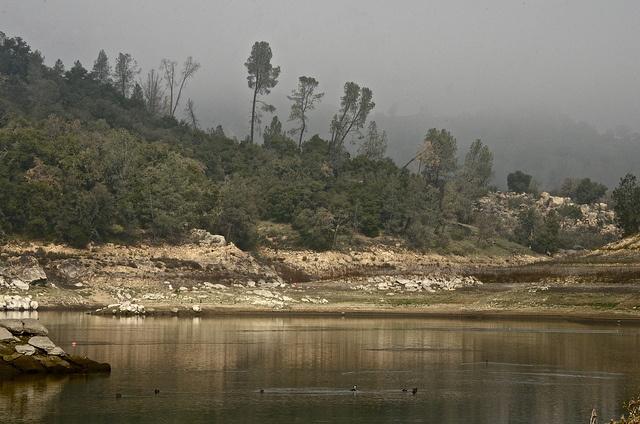

By Bob Best
Fewer showers and browner lawns were predicted for California when Gov. Jerry Brown issued a 25 percent water-use reduction mandate in April. One group that was not concerned: corporate property owners. Many corporations and commercial property investors are already leaders in water conservation measures for office, industrial and other commercial facilities. However, if the rules become even stricter, conserving even more water could present a challenge. And that’s a real possibility.
Another warm, dry winter this year left California with a record-low 5 percent of its average mountain snowpack, a vital source of fresh water, and now the snowpack is down to nearly zero. The state has always been subject to periodic droughts, but the latest one has been exacerbated by record-high temperatures that increase evaporation and turn more winter precipitation from snow to rain. Heading into its dry season, much of the state remains in extreme drought.
Hence Gov. Brown’s 25 percent mandate, which is likely to be the first of many mandatory water restrictions. In April, state regulators released a draft of strict community-by-community water reduction rules, as recently detailed in the New York Times, generating a slew of comments from those affected.
Where is the water being used?
As explained in a new JLL report, half of California’s water supply remains in the environment. The agricultural industry consumes another 40 percent. The remaining 10 percent of water used in the state goes to urban and suburban homeowners and businesses. Just 2.5 percent of all state water goes to commercial real estate landscaping and indoor consumption.
While corporations and commercial real estate investors may not seem like the “face of environmentalism,” many companies that own or operate real estate in California have been quietly doing their part for water conservation for years. Nearly all have realized cost savings as well as environmental benefits from these efforts. Additionally, some have acted to fulfill corporate responsibility goals, to respond to previous conservation legislation, and/or to obtain LEED, Green Globes or Energy Star certifications for their buildings. Environmentally sustainable features usually reduce building operating expenses, and attention to green building materials is becoming a core competency for facilities managers.
Waves of savings
Here are a few of the ways commercial property owners are leading the charge to reduce water waste:
- No-fuss, no-muss landscaping. The state of California has made it clear that local water boards and their communities should look for simple ways to conserve water. Smart landscaping for corporate property owners and homeowners has made a big difference. While urban office buildings tend to have more indoor than outdoor plants, many suburban office parks have populated their acres of rolling greenery with drought-resistant native plants and landscape design that avoids wasteful runoff. Water-intensive grasses have been replaced with easy-going varieties that require little attention.
- Low-flow is the way to go. California’s 25 percent mandate includes a moratorium on water fixtures that are not low-flow, and many commercial property owners are already ahead of the game with water-efficient technologies to reduce consumption. These include low-flow toilets, faucets, ice machines and water fountains, laundry machines, and a host of other office or industrial items.
- No-waste maintenance. In addition to low-flow bathroom and kitchen fixtures, corporate property owners have also been investing in smart building technologies so that buildings can be managed and operated as efficiently as possible. Well-maintained, highly efficient building systems reduce the amount of water used for heating and cooling, keeping steam traps and hot water systems well-insulated and free of leaks.
- Waste not, want not. Smart commercial building owners are applying new technologies to HVAC systems to reduce water use through more effective cooling towers. Since commercial building systems use water to dissipate heat, techniques to control water loss in the cooling process can significantly reduce a building’s water use during cooling season.
- Show me the money. Landlords and corporate property owners are tapping into government tax incentives to help mitigate the costs associated with replacing lawns, improving irrigation systems, and upgrading metering systems to monitor water flow more accurately. Utility savings can save thousands of dollars per year, rapidly recouping investments in water conservation infrastructure. Some corporate property owners are enlisting employees to use water wisely, whether with competitions or other incentives to maximize conservation.
Commercial property building owners and occupiers that have invested in water conservation deserve applause for doing their part ahead of a record-breaking drought. Many of these companies have already reduced energy waste and implemented office recycling programs, among other sustainability measures. Reaching the next level of conservation will take creativity and collaboration on all sides — but the commercial property sector has already proven it has what it takes to be environmentally sustainable.
Image credit: Flickr/Linda Tanner
Bob Best is Executive Vice President of Energy and Sustainability Services at JLL. He directs energy and sustainability services for JLL’s commercial property owner and investor clients. He is a LEED Accredited Professional through the U.S. Green Building Council and a Green Globes Professional through the Green Building Initiative. Follow Bob Best on Twitter at @RSBest
The Good News About Higher California Carbon Prices
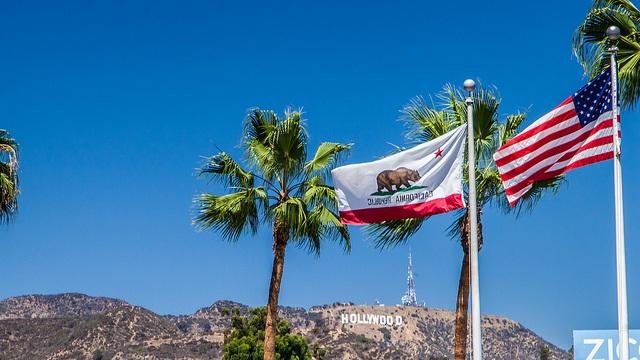

By Chris Busch
Are higher carbon prices a good thing? The answer could be yes.
On May 21, California completed its eleventh carbon allowance auction, the third joint auction with Quebec, which has linked its cap-and-trade program with California’s. Carbon allowances are tradable permits that are the coin of compliance under cap and trade. Each allowance allows 1 ton of carbon dioxide equivalent (CO2e) emissions and is equally valid in either California or Quebec.
The California Air Resources Board (CARB) released the auction's results on May 28, and prices settled at $12.29 per allowance, a small increase of 8 cents from the last auction. This indicates stronger confidence about future demand due to the governor’s recent executive order setting a 2030 statewide reduction target of 40 percent below 1990 emissions.
California carbon prices rising over time ...
These new results reveal a continuing trend of increasing prices, which began in August 2014 when the settlement price was $11.50 per allowance. Though prices are on the rise, they still remain close to the “reserve price,” or the minimum price that allowances can be sold at auction, as has been the case since the earliest days of the market.
The reserve price started at $10 per allowance in 2012, and increases 5 percent plus the rate of inflation annually. The graph below illustrates reserve price and current vintage auction settlement prices over time, as well as the price of futures’ options for sale on the open exchanges. After early auctions settled close to $15 per allowance, prices dropped down to just above, if not at, the reserve price. The uptick in prices over the last three auctions is small enough to be difficult to see, but the upward trend is clear in the numbers.
... Which boosts future emissions reductions
All things being equal, policymakers and pundits view a lower carbon price positively because lower carbon prices usually mean that reductions are proving less challenging than expected.
But the upward carbon price trend over the last several auctions is helpful because, in California, low prices have indicated slack demand. The emissions “cap” — equal to the total number of available allowances — appears to have been set at levels where, at least so far, sought-after emissions reductions are largely being driven by other policies. Examples include the Renewable Portfolio Standard, which increases the supply of zero-carbon electricity, and new vehicle energy efficiency standards, which decrease transportation-related emissions. In this case, slack demand is a positive trend for long-term cap-and-trade system goals.
Energy Innovation’s recent California policy analysis was the first to make use of facility-level data reported to CARB (the Mandatory Reporting data in regulatory terminology), which show emissions from sources covered under cap-and-trade amounted to 348 million metric tons of CO2e emissions in 2013. Emissions have likely fallen further since then, considering California’s other policies have ratcheted up in strength.
Though near-term demands from cap levels under the cap-and-trade program are unlikely to drive significant emissions reductions, a carbon price is still important. Having one in place with credible expectations that it will persist and even trend upward helps guide long-term investment decisions, driving greater uptake for low-emission technologies.
Higher prices drive environmental, economic benefits
Despite stubborn pockets of poverty and unemployment, the strength of California’s broader economic recovery is unmistakable and predictions of climate leadership damaging the overall economy have been proven wrong. Last year, California was home to 1/3 of all new jobs created in America, with “advanced energy” jobs topping 500,000 in a recent survey.
Add it all up, and for once, higher prices are a good thing all around: A healthy cap-and-trade market, greater emissions reductions, and dedicated funding for clean energy and our most deserving communities.
Image credit: Flickr/Paul Gravestone
Chart source: Energy Innovation graphic with futures data from the Intercontinental Commodity Exchange, accessed 12 March 2015; CA market data from CARB. Canadian data from the government of Quebec.
Chris Busch is the Director of Research at Energy Innovation, where he leads the company’s work on Urban Sustainability. Prior to joining Energy Innovation, Chris served as a Climate Economist with the Union of Concerned Scientists, Policy Director for the Center for Resource Solutions, Policy Director for the BlueGreen Alliance, and Senior Research Associate at Lawrence Berkeley National Laboratory. His work in California has helped shape the design of the state’s cap-and-trade program. In 2009, the California Air Resources Board appointed him to the AB 32 Economic and Technology Advancement Advisory Committee. Chris holds a Ph.D. in environmental economics and a master’s degree in public policy, both from the University of California, Berkeley. He received a B.A. in economics and history with honors from the University of Pennsylvania.
Higher prices for sustainable palm oil could save endangered species


Higher supermarket prices for eco-friendly palm oil could help save endangered species, according to University of East Anglia (UEA) research.
Palm oil is used by the food industry as a cheap substitute for butter. But the conversion of tropical forests to oil palm plantations has had a devastating impact on a huge number of plant and animal species including tigers, elephants, rhinos and orang-utans.
The new research reveals that a willingness among consumers to pay more for sustainably-grown palm oil would incentivise producers to engage with conservation projects.
Lead researcher Prof Ian Bateman, from UEA’s School of Environmental Sciences, said: “International governments have failed to stem the environmental damage caused by oil palm plantations. We wanted to find a new way of halting biodiversity loss that actually becomes profitable for private companies.”
An international research team of economists and ecologists looked for ways to make conservation profitable. The research was led by UEA, in collaboration with the Zoological Society of London (ZSL), the University of Vermont (US) and the World Wildlife Fund (US).
They focused on Sumatra – an Indonesian island and biodiversity hot-spot which has seen tropical forests replaced with plantations, resulting in a rapid decline of species.
The research team carried out biodiversity surveys across palm plantations, nurseries, forest and cleared land in central Sumatra. They also obtained access to company financial records to see how setting aside land for conservation affects biodiversity and company costs.
The research shows that the location of conservation areas had a major effect upon both the effect on wildlife and the impact on company profits. By taking both of these factors into consideration the researchers identified areas which provide the best balance between promoting biodiversity and reducing costs to companies.
Prof Bateman said: “Consumers’ willingness to pay for sustainably grown palm oil has the potential to incentivise private producers enough to engage in conservation activities. This would support vulnerable ‘Red List’ species.
“Combining all of these findings together allows us to harness the power of the market and identify locations where cost-effective and even profitable conservation can take place."
Prof Brendan Fisher, of the University of Vermont’s Gund Institute for Ecological Economics, said: “We face two potentially opposing forces. One is increasing demand for food, fiber and fuel products across the globe. The other is the absolute imperative to stop the loss of biodiversity from the planet. This work here shows how important it is for industry and scientists to work together and find potential win-wins, or at least to mitigate the trade-offs between conservation and agricultural production."
Picture credit: Dreamstime.com
Sustainability & Innovation: Ron Cotterman, Sealed Air
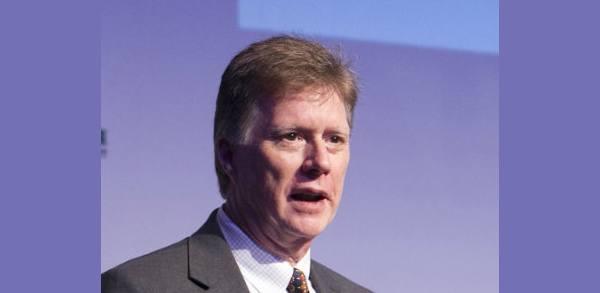

At this year's Sustainable Brands conference in San Diego we were challenged by Janssen Pharmaceuticals to ask leaders at the conference what the word "innovation" meant to them. Then, more specifically, we asked how innovation may or may not drive advancements in sustainability. We got a terrific range of responses which we've got documented in a series of short video interviews. You can follow along here.
In this interview, Ron Cotterman of Sealed Air shares his answers: